231. A Drawing is Not a Moment in Time
going down rabbit-holes from an innocuous but insightful question
Dear reader,
Last week, I showed my sketchbooks and talked about my art journey at a meeting of a local arts society. Poring through the pages, an attendee asked this question:
“If the people are moving about all the time, how does your drawing accurately capture the moment?”
I had to think about my response because there are so many interesting ways to answer the question. It is innocuous yet deeply insightful. It involves one of my favourite things to ponder - the passage of time.
In today’s post, some good answers.
The SneakyArt Post is a publication of secretly drawn art of the world. Every week, I share the best drawings from my sketchbooks and the best ideas from my journey as an artist, writer, and (new) parent.
Time Passing
I think about time a lot. You could say, I spend a lot of time thinking about time. Which is interesting, because old ideas and new discoveries both conclude that thought itself is time. So there’s a strange loop in passing time thinking about the passing of time which leads to … time passing.
In India, when you do something for no good reason, it is called time-pass. Often bad movies are described this way. How was the movie? Is it worth watching? Oh, no. But it is time-pass. The idea that an experience that does not change your life in any way at least helps pass some time.
More than 2000 years ago, Aristotle was also thinking about time. Without fancy instruments or decent wi-fi, he concluded that time passes in observable change. How much time has passed can be measured by the decay of things - a candle, an animal carcass, a flower, the moon etc. It was a different world back then. Everyone and everything lived on their own time.
Consider this quote by Heraclitus, a couple of hundred years before Aristotle:
“No man steps in the same river twice. For it is no longer the same river, and he is no longer the same man.”
The idea of a universal time did not always exist in the popular imagination. Thanks to phones, and time-zones, and wi-fi connections, and productivity coaches, today it is how we popularly imagine time. This is a pity because Aristotle was actually right. Innately, all of us understand this. Time is relative. Time is personal. Time is local.
Einstein made big moves to explain this, asking people to go on a hot date or sit on a hot stove and compare how quickly (or slowly) time passes. My favourite book on the subject is The Order of Time by the physicist-writer Carlo Rovelli. If you have followed this post until now without hitting the delete button, you are ready to read this book too.
The more you notice and feel, the more aware you become of the passage of time. The greater the awareness, the greater the time passed inside the same tickings of the same clocks. Observation is the key to getting more seconds per second.
To notice your environment, and observe its changing lights, shadows, shapes, and colours, is a way to pack more information into every passing second. A way to enrich your time and your day, and your week, and your year, and your life.
Long before I read the scientific explanations, I understood this from another favourite book - Catch-22 by Joseph Heller:
“…A half minute before that you were stepping into high school, and an unhooked brassiere was as close as you ever hoped to get to Paradise. Only a fifth of a second before that you were a small kid with a ten-week summer vacation that lasted a hundred thousand years and still ended too soon. Zip! They go rocketing by so fast. How the hell else are you ever going to slow time down?” Dunbar was almost angry when he finished.
“Well, maybe it is true,” Clevinger conceded unwillingly in a subdued tone. “Maybe a long life does have to be filled with many unpleasant conditions if it’s to seem long. But in that event, who wants one?”
“I do,” Dunbar told him.
“Why?” Clevinger asked.
“What else is there?”
“How does your drawing accurately capture the moment?”
It does not, I answered. A drawing, even when made from direct observation, does not capture a moment in time. It is much more creative and powerful than that.
A drawing encapsulates the totality of all the time spent drawing at a location. The drawn scene is not a moment, but a timelapse video on paper. It captures the evolution of the scene, and the shifting of the light. A drawing in a busy city accurately represents the activity of people without being true to any single moment.
I opened the sketchbook with a drawing made at an open concert of the Coastal Jazz Festival in downtown Vancouver. The first people I drew on the page were on the left-most part of the crowd. By the time I reached the right side of the page, how many of those people were still in the same place? How many had taken their places even as I moved across the page? How many had left before I finished? Every element of this page was really there, every person doing the things, every tree, and window, and tent flap. But this moment is artificial, because of the process of observation and depiction over time.
Everything in it is real, but the drawing is not. Everything was ephemeral and did not exist beyond the moment that it did, but this page exists even today.
I guess the idea of capturing a moment is ubiquitous to our times because photography is so commonplace. We are obsessed with capturing moments. More than every other species on this planet, we are obsessed with time. We are so obsessed with capturing time, that often we forget to live in time. Historic moments are seen through the prism of a camera lens. Beauty is sought after only with respect to how it may be captured, and shared, and how it may be regarded later. We are experts at imagining how best to see something later, but we rarely grapple with how to see it now.
Many years before social media, Susan Sontag described the tendency to memorialize the present for our future selves, to degrade our present experience for the sake of an image, and to then elevate that image (future) over the truth (present), as living in a cult of nostalgia. We are so deep in it now.
Impressions
To paint the Waterloo Bridge in London before dawn, the artist Claude Monet visited the same location dozens of times to capture the light and shadows, and every nuance of colour, and every truth of the moment. But at the same time, his art was perfectly tuned with everything non-truth. His final painting was made in his studio from memory and the information he had ‘recorded’ on location.
Monet was one of the first great Impressionists, who rejected the idea of so-called realistic depictions.
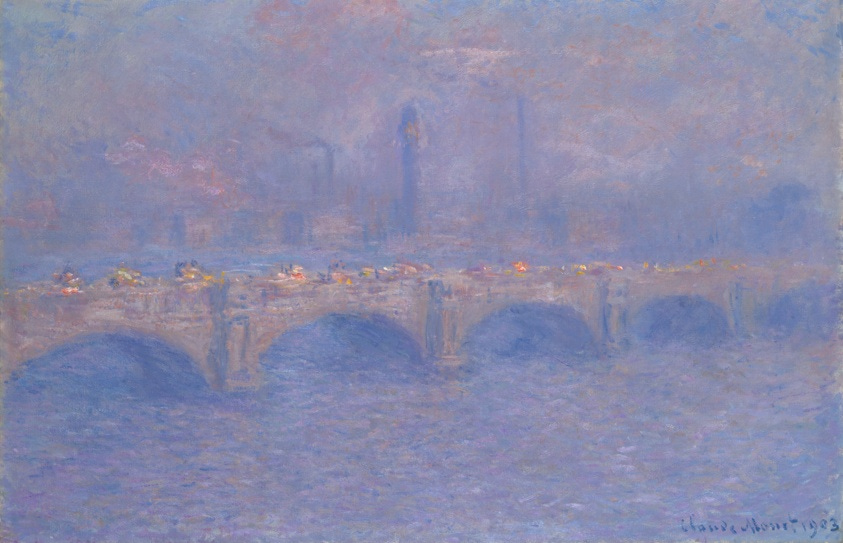
With the advent of photography, and its brute invasion into this traditional domain of art, the Impressionists were re-inventing art’s raison d’etre (reason to be).
“For me, a landscape does not exist in its own right, since its appearance changes at every moment.” - Monet.
A landscape does not exist in its own right, because nothing exists outside of perception and observation. And because observation and perception are deeply personal, no existence is universal. Everything is personal. Everything is subjective. Everything is an impression.
“All I did was to look at what the universe showed me. To let my brush bear witness to it.” - Monet.
More Demos and Drawings
This weekend was one of many demos and drawings. On Saturday’s Insider Hangout, I drew several scenes from my photo gallery. We discussed our art supplies and I demonstrated how I am using POSCA markers as a substitute for watercolours. On Sunday, I conducted a new workshop about simplifying and quickly sketching complex urban scenes.
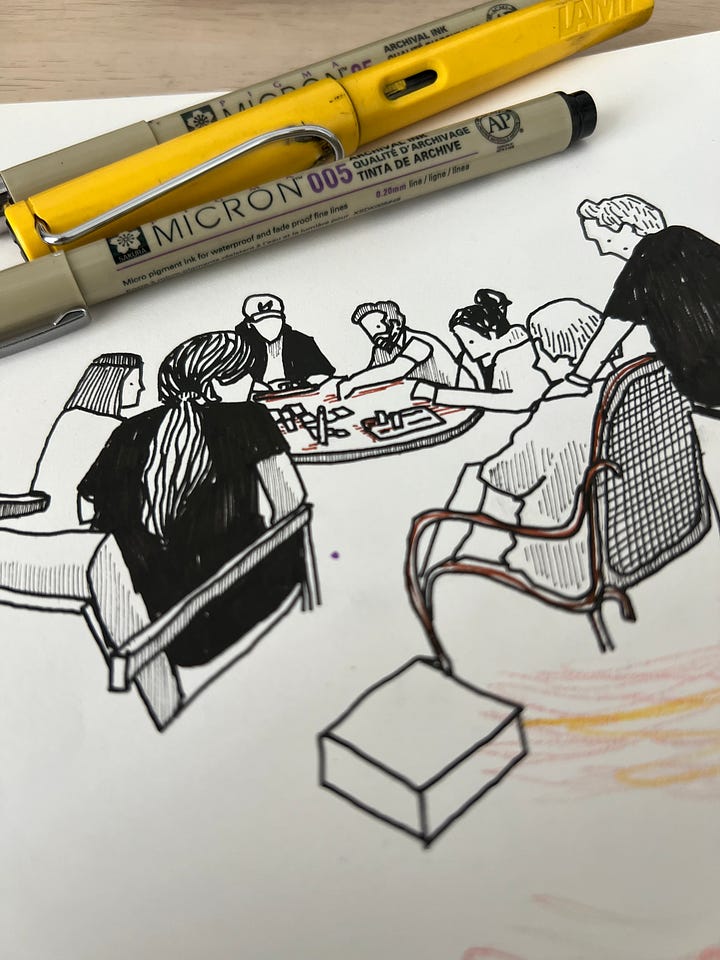
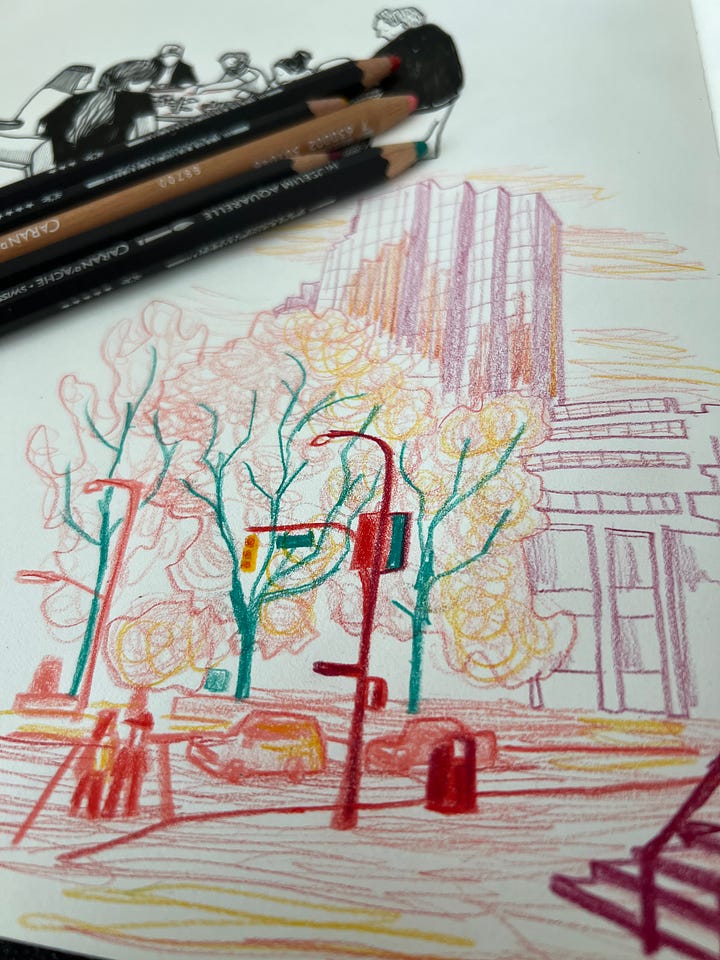
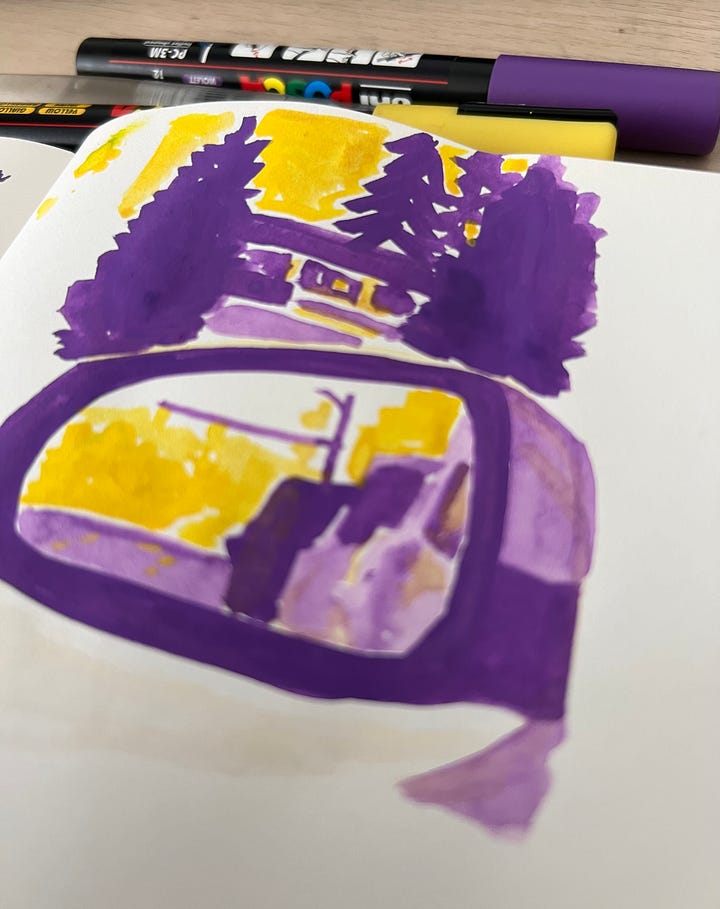
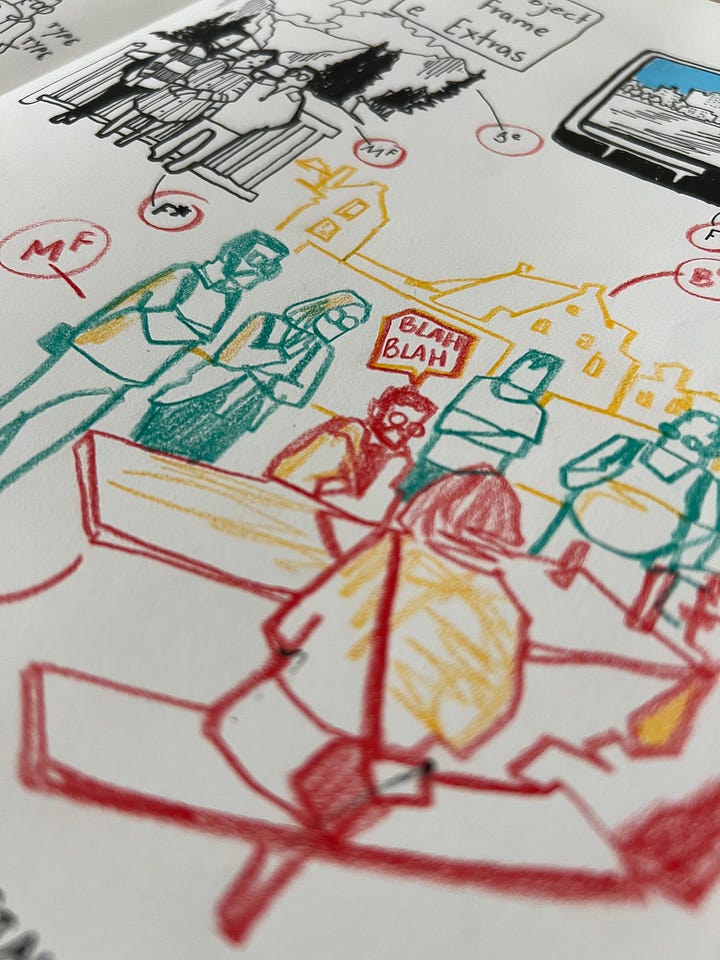
The monthly Insider Hangouts are exclusive sessions with SneakyArt Insiders, the paid subscribers of this publication. Insiders also get free seats in all my workshops, which is my way of saying thanks for the support that allows me to work as an independent artist and writer.
This year, Insider support is almost exclusively going into buying diapers for little Rohan. Drawing him every day is another way of slowing down time. He is now 14 weeks old. If I could not flip through the pages of my sketchbook dedicated to drawings of him, I could not tell you where the time went. But now I can. It is inside those pages, dear reader, where it will remain forever.
A drawing is not a way to accurately capture a moment. Because there is no moment, and no such thing as “accurately”. But if you practice enough, you can become very good at capturing your experience, your perception, your memories, and your impressions. Inside just a thing of paper. A drawing is magic.
Thank you, dear reader, for your time and attention. I am glad to have a space in your inbox.




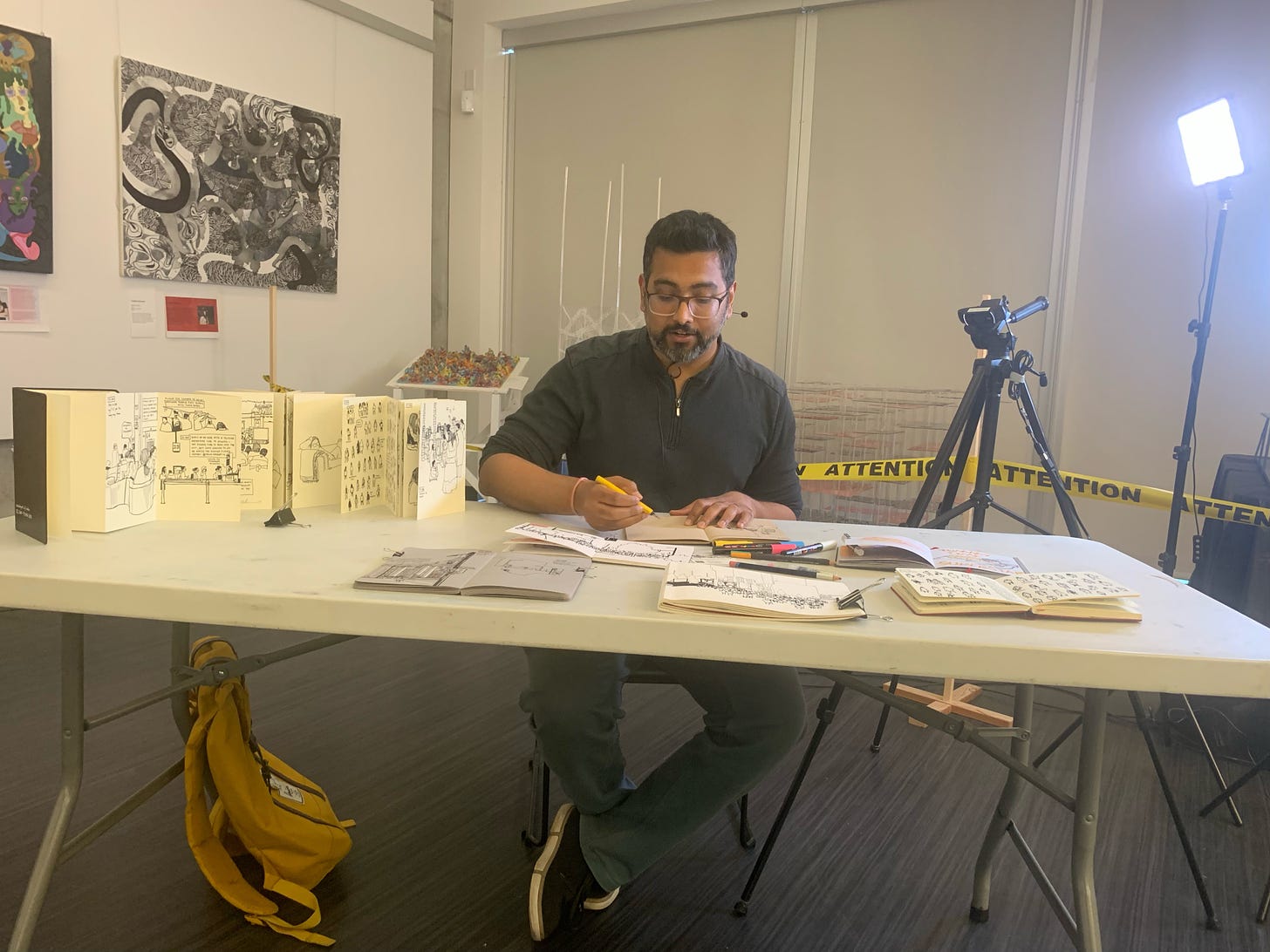


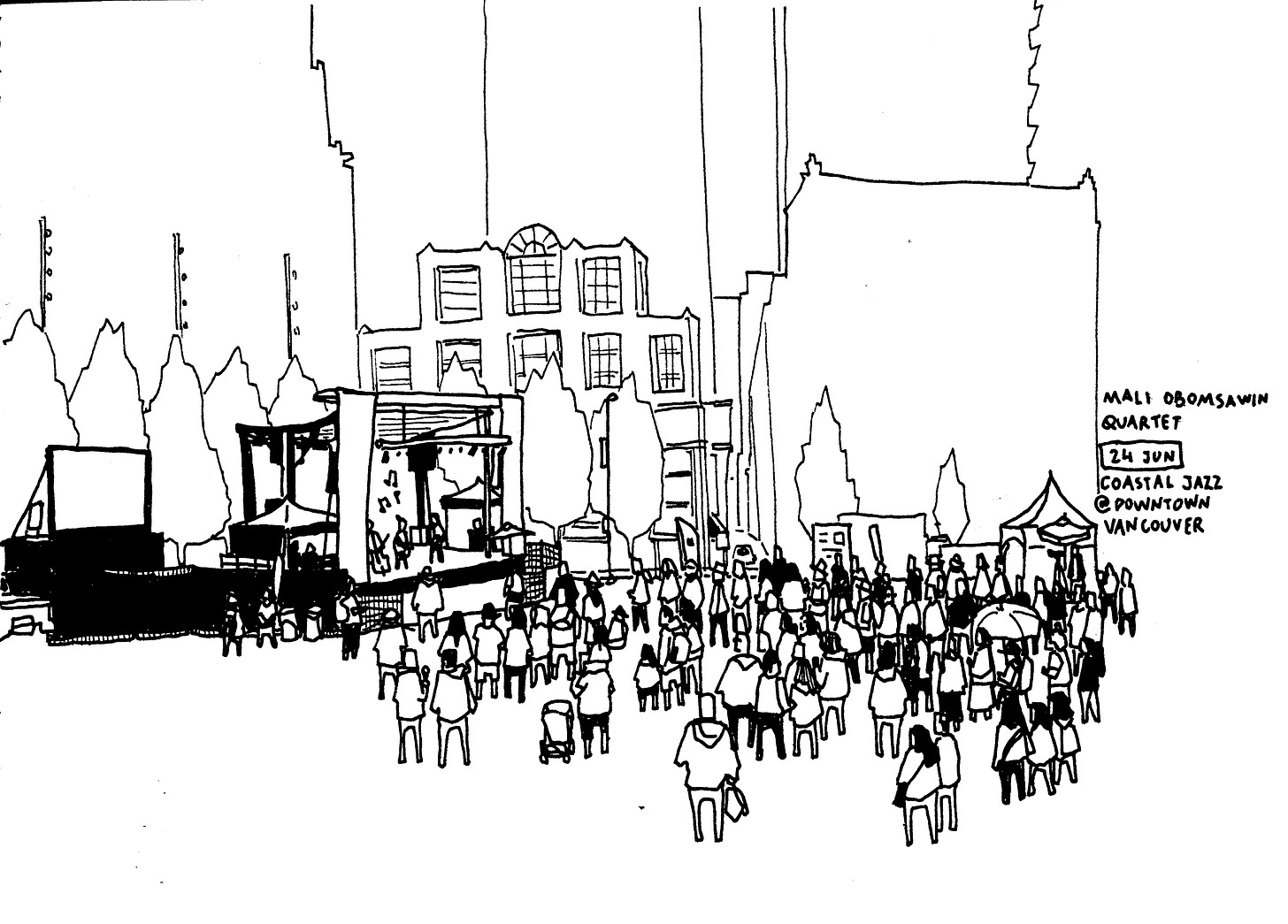


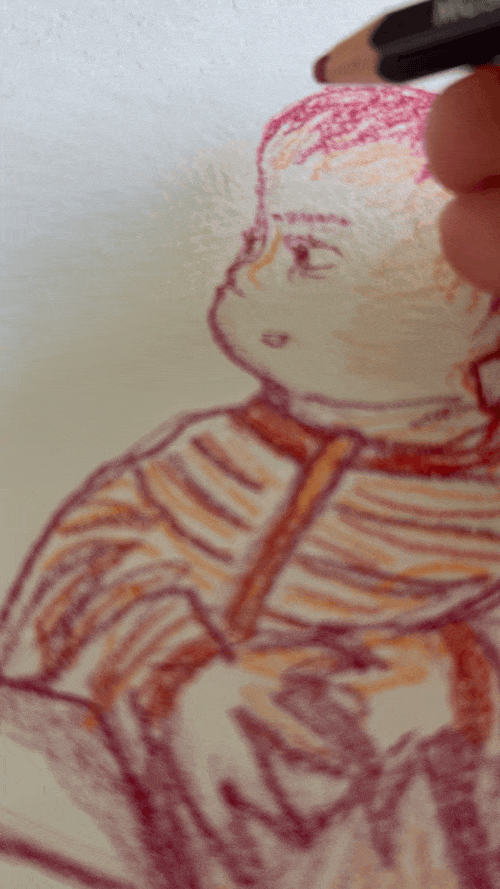

A drawing being a time lapse on paper ... This resonates with me as a description ; how often don't we say we get totally absorbed by a drawing and forget everything else?
This was a beautiful reflection. Thank you!